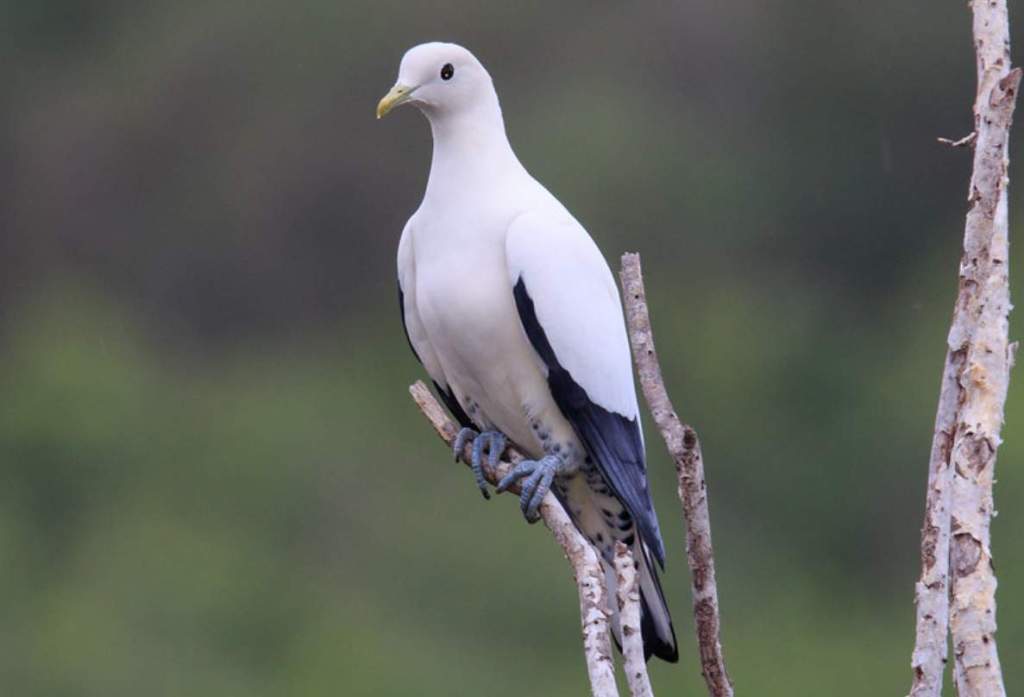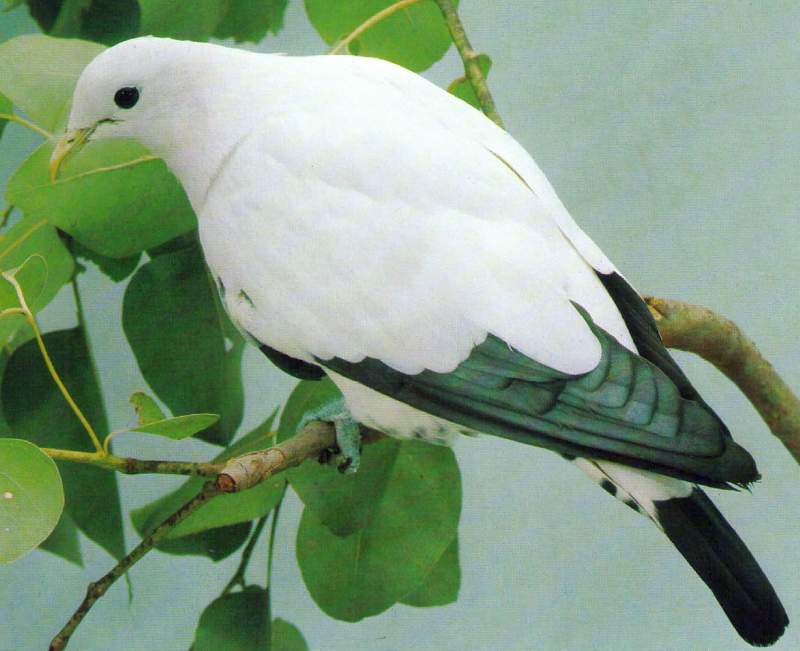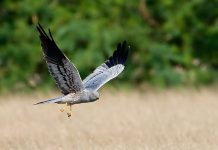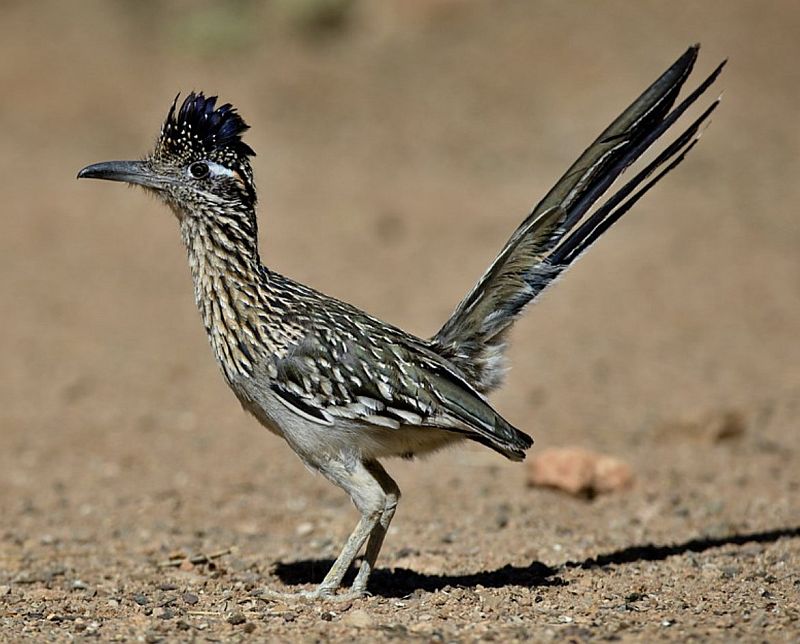Late dry seasons in New Guinea herald the breeding season of Torres Strait Imperial-Pigeons (Ducula spilorrhoa), which are common in the lowlands. They remain there to nest, but they also migrate to offshore islands, where they form breeding colonies, and to Australia in large numbers. They reach the Cape York Peninsula in July and Arnhem Land in mid-August. The eastern Australian population has occupied breeding islands as far south as Cairns by the end of August.
The majority of the birds depart between February and April, where they remain until the end of summer. Mangroves and coral make up some of the breeding islands, and none of them have enough fruiting trees to feed the birds. Consequently, the pigeons fly out in large flocks each morning to feed on fruit and rainforest trees on the mainland. Their flight consists of regular beats and sharp wing flicks, alternating regular and sharp beats.
As they return to water in small groups in the late afternoon, they fly low to the surface. There is a veritable roar on the island when returning birds bellow their territorial calls. The off-duty parent feeds the young on the mainland while the male incubates, broods, and incubates the eggs. Torres Strait Imperial Pigeons, however, nest in close proximity to one another on breeding islands. In the best nesting trees in the colony, there may be a nest for every one and a half square meters, as on the island off Port Douglas that contains 25000 birds in some years. The nests are substantial platforms constructed from twigs with leaves attached, situated on leafy horizontal branches.
Torres Strait Imperial-Pigeons bow vigorously and loudly both in aggressive and courting situations. It inverts its body forward with a distended neck and breast when upright. Neither its wings nor tail are spread, and it holds its wings close to its body. The bill of the bird is pressed against its breast, 15 times are made in rapid succession by the bird, bowing deeply and forcefully each time. When the body swings from horizontal to vertical during the display, a loud coo is accompanying the movement. Torresian Imperial Pigeons can also be called Nutmeg Pigeons, White Nutmeg Pigeons, and Australian Pied Imperial Pigeons.

There has been a significant decline in the number of Torres Strait Imperial-Pigeons visiting Queensland this century. During the 1900s, the author E J Banfield described 65000-100000 birds breeding in the Family Islands, off Rockingham Bay. Another enormous colony was found south of Mackay. Port Douglas, 600 kilometers north, is the only place where there are large colonies today. Fewer than a hundred birds live in the Family Islands, and the more southern populations have dwindled to remnants.
As a result of widespread clearing of lowland rainforest and subsequent destruction of the birds’ food supply, much of the decline is doubtless due to this, but this cannot explain the entire decline as there is still forest adjacent to some decimated colonies. The shooting of birds during breeding season and the disturbance that results must also play a role.
The Torres Strait Imperial-Pigeon population seems to be more abundant in years when the mainland forests are particularly fruitful. Pigeons eat different kinds of food depending on the season, because the trees they eat have different flowering seasons and fruit irregularly. Two-year study of a colony off Port Douglas showed that lawyer vines, northern laurel trees, and scrub turpentine trees provide the most fruit for the birds; native olive trees and northern walnut trees provide the most fruit for the birds in the lower level. Though some areas call the birds Nutmeg Pigeons, the fruits of the nutmeg are not very important. The Torres Strait Imperial-Pigeon measures 350-400 mm in length.
Read More – Nicobar Pigeon – The Coolest Pigeon in the World

There is a similarity between the sexes. The tail is slate-black and the lower half of the tail is white, often with a grey bloom to the head. Black spots on the vent and thighs. There is a blue-gray background around the eyes, and the surrounding skin is dark brown. The bill is lemon-colored with a yellow tip. Feet are blue-green. There is no ventral spotting on the immature bird and black and white parts are greyer. Yellowish is the color of the downy young. An identity call is a deep, powerful coo; in display, a deep coo is uttered at low points of each bow; in courtship, an audible click is heard.
Nesting and breeding take place between September and January. The peak egg laying season is September-November. Nests are often constructed of mangrove twigs with leaves attached. They range in diameter from 135mm to 310mm, and are 20-25mm deep. These nests are located on leaf-covered horizontal branches between 1 and 15 meters high. It has one egg, which is smooth, glossy white, and oval, with a diameter of 45 by 31 millimeters. Both sexes incubate for about 27-28 days. In about 23-24 days, the young fledge.
The Torres Strait Imperial-Pigeon can be found in coastal northern Australia between the northern Kimberleys and Mackay, Queensland, during the summer migration from southern New Guinea. In northern New Guinea, the Bismarck Archipelago, and northwest through Indonesia to India, other races have milk-white plumage, slaty bills, or plain vents.







